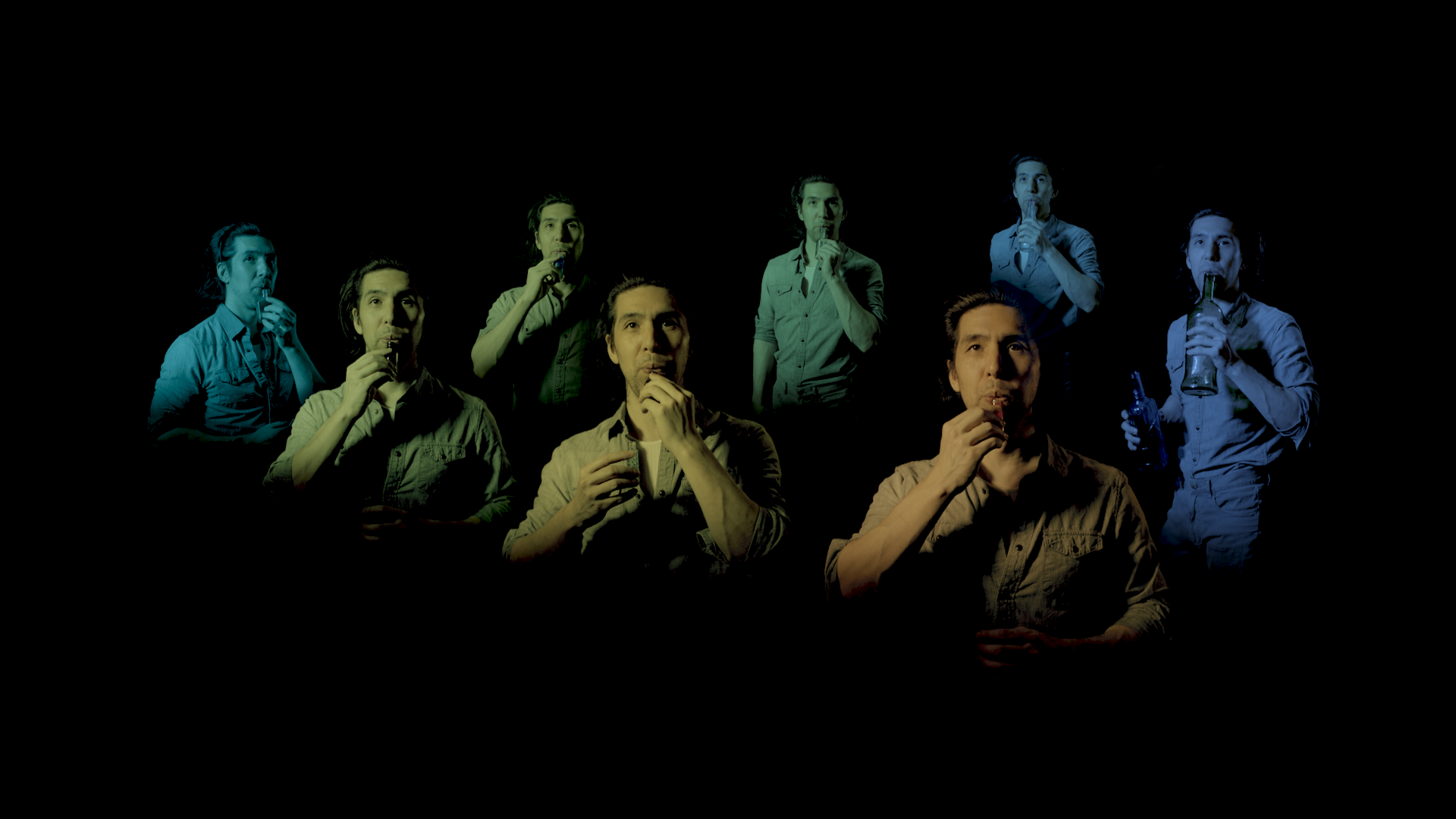Watch the full video here (4 minutes; listen with stereo):
(The video is password-protected while it's being screened out in the world. Please contact us if you would like the password!)
emergunt chordae is an original piece for glass bottles, composed and performed by Masa Gibson. The title, which translates to "strings emerge", was inspired by the title of a theoretical physics paper, Emergent Strings from Infinite Distance Limits (2022, Lee, SJ., Lerche, W. & Weigand, T.), in which strings refers to the one-dimensional building blocks of the universe postulated in string theory.
The video depicts a bottle player who temporarily gains control over spacetime and plays alongside alternate versions of themself to weave together a polyphonous, interdimensional interlude.
As with other entries in the Bottlemusick series, everything on this track was performed on glass bottles. While some of the track may sound electronic, all the sounds recorded were acoustic, and the only manipulations done beyond standard mixing and EQing were: (a) linear fades at beginnings and ends of some clips and (b) abrupt cuts in the middle of some clips. It's a commonly known phenomenon in sound editing that abruptly chopping a waveform at a point where its amplitude is non-zero results in an acoustic artifact—a staticky, popping sound, which was deliberately exploited to lend a percussive effect to the mix.
emergunt chordae is an original piece for glass bottles, composed and performed by Masa Gibson. The title, which translates to "strings emerge", was inspired by the title of a theoretical physics paper, Emergent Strings from Infinite Distance Limits (2022, Lee, SJ., Lerche, W. & Weigand, T.), in which strings refers to the one-dimensional building blocks of the universe postulated in string theory.
Full video (4 minutes; listen with stereo):
(The video is password-protected while it's being screened out in the world. Please contact us if you would like the password!)
The video depicts a bottle player who temporarily gains control over spacetime and plays alongside alternate versions of themself to weave together a polyphonous, interdimensional interlude.
As with other entries in the Bottlemusick series, everything on this track was performed on glass bottles. While some of the track may sound electronic, all the sounds recorded were acoustic, and the only manipulations done beyond standard mixing and EQing were: (a) linear fades at beginnings and ends of some clips and (b) abrupt cuts in the middle of some clips. It's a commonly known phenomenon in sound editing that abruptly chopping a waveform at a point where its amplitude is non-zero results in an acoustic artifact—a staticky, popping sound, which was deliberately exploited to lend a percussive effect to the mix.
Screenings and Awards
| Year | Event | Status/Award |
|---|---|---|
| 2025 | Voices Rising Film Festival | Official Selection |
| 2025 | New York Long Island Film Festival | Official Selection |
| 2025 | Revolution Me Film Festival | Official Selection |
| 2025 | Mott Haven Film Festival | Official Selection |

